An Expert at Korean Cooking Is an Expert at Kimchi-Making: Interview with Kimchi Master Kim Kyeong-mi
Written by Karina Prananto.
“Eomma, kimchi juseyo” – I still remember that song clearly in my head from back when I went to the Gwangju Kimchi Festival about ten years ago at Jungoe Park, near the Biennale Exhibition Hall in Buk-gu. It was a children’s song about a child who wanted to eat kimchi because it was so delicious. Coming from a tropical country, I am not used to eating cold dishes, as everything has to be fully cooked and served hot. So eating cold, spicy, and sour kimchi for the first time was a brand new experience for me. I admire Koreans’ attachment to kimchi, as even a song was made for it!
Kimchi’s presence in the lives of the Korean people is deeply rooted in time, and kimchi is not just napa cabbage kimchi (baechu kimchi), which is probably the one kimchi that comes to mind whenever the topic of kimchi comes up. In fact, there are probably over a hundred types of kimchi. Kimchi, basically fermented food, was first developed to create a longer lifespan for the food. The Gwangju World Kimchi Festival, held annually in October, is a festival to celebrate this national staple of Korea. One of the events held during the festival is a competition to find the nation’s best kimchi. People from all around Korea come to compete with their unique kimchi recipes. So of course, the winner is the best among the best of those who can make kimchi!
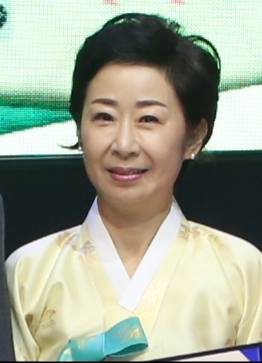
Kim Kyeong-mi, the winner of the Presidential Award at the Gwangju Kimchi Festival in 2018, is from Gyeonggi Province. She is currently a professor at the Korea Hospitality and Tourism College in the Hotel Culinary Department in Ansan, as well as the director at Banga Food Research Center. We were lucky to be able to interview her despite her very busy schedule.
Gwangju News (GN): Professor Kim, thank you for your time. Could you tell us about your childhood and how you first became interested in cooking?
Kim Kyeong-mi (Kim): I have liked cooking since I was small. As the only daughter in the family, my mother raised me to be able to prepare meals. My mother worried that I would go through troubles once I got married if I grew up not knowing any hardship, so she sent me on lots of errands. My mother’s worries that I would not be able to do anything led me to become an expert at cooking. Learning next to my mother, I tasted and cooked many different kinds of foods, although with lots of mistakes. This accumulated experience over a long period of time is the foundation of what I am today.
I grew used to helping my mother by wetting my hands and lighting the fire. At that time, to go into the kitchen from the main room, we had to cross the threshold and step down into the kitchen area. The structure of the “stove,” which burned firewood to boil water, and using briquettes for cooking were not obstacles for me. I sat at a warm part of the wood-burning stove, tidied up the ingredients, and warmed my freezing hands.
When it was time for a holiday or ancestral rites, the sunken kitchen floor became a rice cake mill. Once the rice had been soaked in water, drained, and then crushed in a mortar, it went through a sieve and was cooked in a steamer. For summertime, misu-garu (미숫가루), the mixed powder of barley, corn, or soybean that was roasted after being steamed over the briquette fire and dried, was made in the kitchen. Making meju (메주, boiled and crushed soybean blocks) and doing kimjang (김장, annual kimchi-making) became additional chances to challenge myself with new things. Looking back, my mom, who makes exceptionally good food and enjoys cooking, was my first teacher in life.
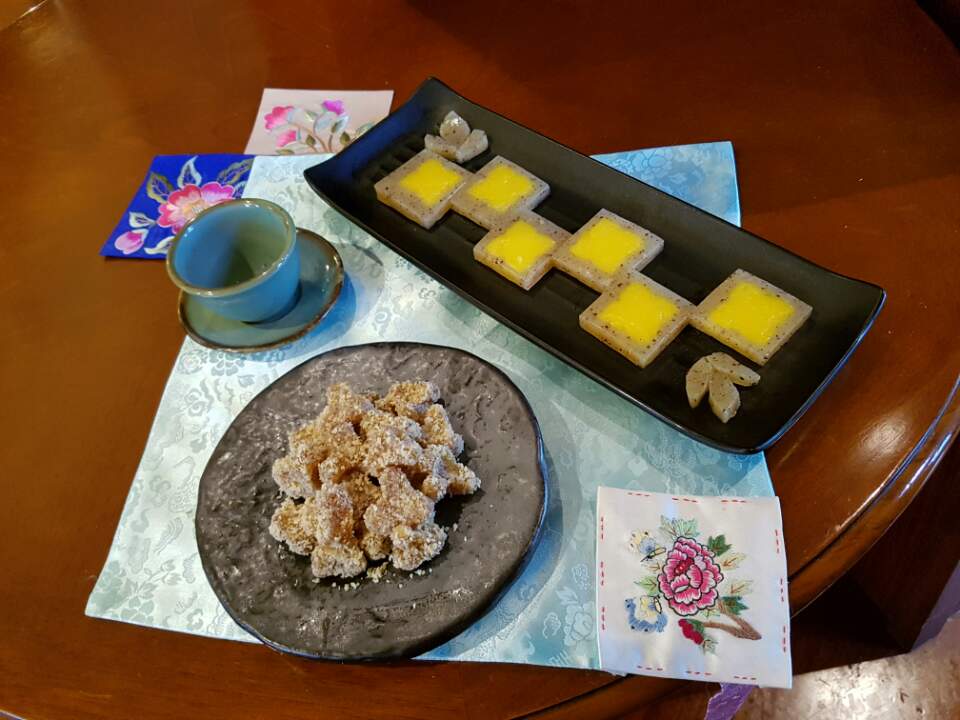
My elementary school friends thought that it would be natural for me to become a cooking instructor since they had tried my self-made and self-named “ssuk-teolteoli” (steamed young mugwort and rice powder mix), which was made with hand-picked mugwort from a field in my neighborhood. As they recall, they were fascinated by my actions – actions that they had never tried as children. Even I think I was quite impressive at that time!
I remember several things related to kimchi. When 300 heads of kimchi were delivered by truck in our alleyway, it became very loud. “It is kimjang day for Kyeong-mi’s family.” Ajumma (housewives) from the neighborhood with their heads wrapped in scarves brought rubber gloves to help out. It was a community affair shared in the neighborhood in which the process of trimming, cutting, soaking in brine, washing, and preparing seasoning were done with lightning speed. I helped with running errands and received lots of compliments, so it was an exciting day for me. My mother, whose kimchi was being made that day, could not directly participate in the actual kimchi-making, but was busy providing the ingredients and transferring the finished kimchi to large kimchi pots. Sometimes, if the kimchi was too salty or not beautifully wrapped, my mother would be annoyed, but she was happy to be part of the harmony of loving and helping neighbors.
When the kimchi-making was over, my tired body felt shivering cold. At that time, my mother would boil a full pot of spicy fish soup with frozen pollack and serve it with hot rice and freshly made kimchi, which was her expression of gratitude for those who helped with that winter’s kimjang. The ajumma returning to their homes had one or two heads of fresh kimchi in their hands. Now, I get help from my daughters to make 50–60 heads of kimchi. I always smile with my memories of those days gone by.
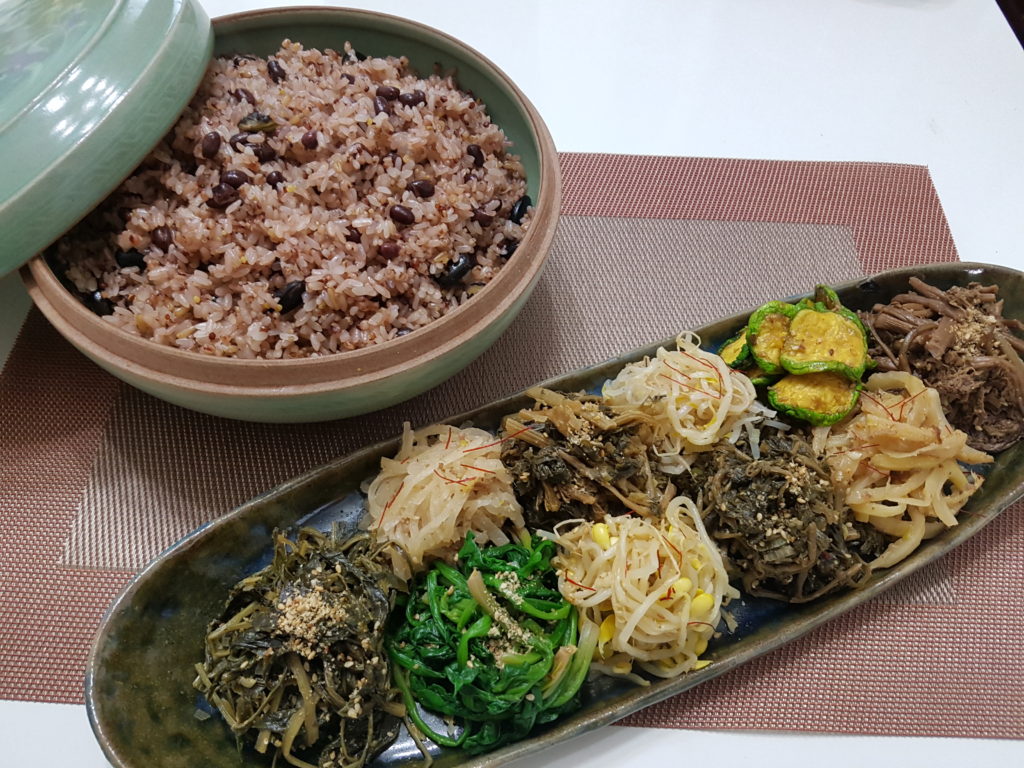
GN: When did you start making kimchi professionally?
Kim: I felt I finally became an expert in teaching kimchi in 1994, when I was working as a research director at the Pulmuone Kimchi Museum. It was the spring, just after I came back from studying in Japan, that I started to teach children’s cooking classes that were popular in Japan at that time. It was an educational program to familiarize children who did not like to eat kimchi. Since then, I have taught how to make kimchi more easily in kimchi-making classrooms for kids. I also held a kimchi-making competition for children once with my father.
GN: Could you tell us about the kimchi that you made in 2018 that earned you the Presidential Award?
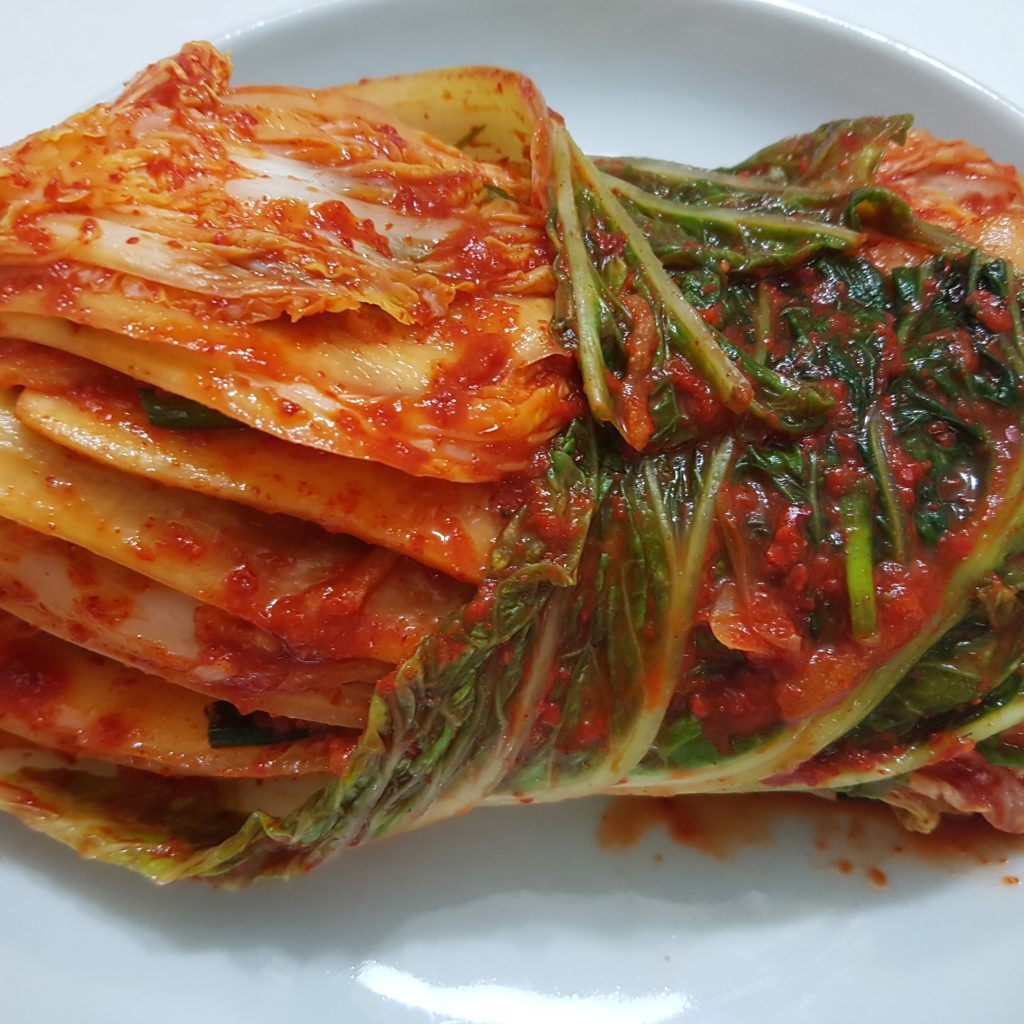
Kim: It was a whole-cabbage kimchi with thinly sliced radish layers. This kimchi is characterized by the difference in its final shape from ordinary cabbage kimchi. After the cabbage leaves soaked in brine were washed and drained, thinly sliced radish would be mixed with seasonings and put in layers in-between each of the cabbage leaves.
Normally, the julienned radish would be mixed with seasonings and used for stuffing between cabbage leaves. This stuffing would be left behind when people ate the kimchi and was messy when the kimchi was used for cooking, and this part of the kimchi would go to waste.
If thinly sliced radish is used as filling between layers of cabbage leaves, the radish can be eaten like the cabbage leaves and there will be no food waste. Since seasonings like hot pepper powder and fish sauce can be used according to the recipe of the region or the individual family, it would be cost-effective as well. When the season comes when cabbages become more expensive or in areas where cabbages are rare, if thinly sliced radishes are added, it doubles the quantity and adds fresher flavor.

GN: What do you think were the most challenging moments in your life regarding developing a recipe?
Kim: Well, I have always enjoyed what I do, so I never thought that it was hard. Since I have been studying food for over 40 years, now the big picture has come into sight, and it has become easy to apply different recipes to kimchi. Whole-cabbage kimchi with thinly sliced radish layers is a good example. Korean people started making whole-cabbage kimchi in the 18th century, which means it has been more than 200 years since people started using julienned ingredients for making kimchi. It was just thought that it was supposed to be that way. As far as I know, no one had ever thought to slice radish thinly like a cabbage leaf like I do. The feeling of accomplishment gives me strength to live.
GN: Could you tell us about other recipes that you are currently developing?
Kim: I have a kimchi recipe that I worked to develop this spring. It was developed in preparation for the Spring Kimchi Festival held in front of Seoul City Hall. During the opening event, I was invited to demonstrate how to make spring kimchi. I researched it so that foreigners could find it easy to make as well. The name of the kimchi is “Spring Vegetable Beomurim Kimchi.” By the time people get tired of kimjang kimchi from winter, it is the season of spring vegetables, which are easy to find at the supermarket. You do not have to stick to eating standard kimchi that you had all winter. This beomurim (버무림) kimchi involves putting spring vegetables into a small bowl of freshly harvested spring Chinese cabbage. But the taste of this kimchi is not far from the essence of the purpose of kimchi-making: the fermentation.
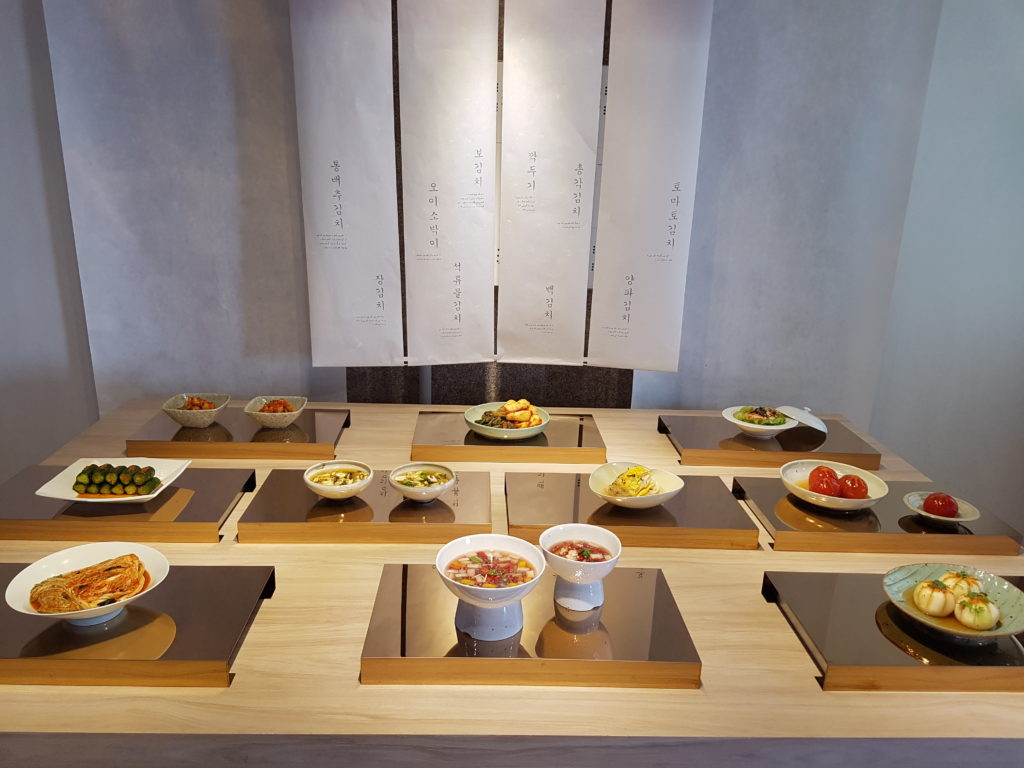
For spring, winter-grown cabbage, not fully-grown cabbage from open fields, can be used. Spring vegetables that can be eaten raw can be used for this and for all kinds of cooking. Clean and cut the vegetables 5–6 centimeters in length. You could include salt sandspurry, stringy stonecrop, toothed ixeridium, wild watercress, chives, barley sprouts, small green onions, and others. Other ingredients are tomatoes, barley rice, strawberries, or other spring vegetables. Also, we use fruits topped with spices, like red pepper powder, garlic, and ginger, and put them into the spring cabbage. Kimchi is usually fermented, but it can also be nice and appetizing when eaten fresh. This dish made a lot of good impressions. The development was successful.
GN: What do you think about the future of Korean traditional food or kimchi-making with the youth these days?
Kim: Korean food is healthy and often fermented. There is a fundamental difference from food that is seasoned with additives like fast food is. If you cook processed food, you can make it easily and it can be tasty. However, Korean food is flavored with natural ingredients, so there are many times when we cannot make the same taste even if we follow a recipe. I do not see this as being bad. I want to keep putting effort into making food that has deep flavor and is good for your health. Instead of convenient food with the same taste as if it were mass manufactured, I seek to create unique tastes that are difficult to achieve without effort. So I want to make precious foods that people around the world are looking for.

Last fall, I was appointed as a member of a judging committee for a cooking competition adapting kimchi as part of their recipes. From college students to professional Korean cooks, participants brought ripe fermented kimchi and cooked it, so there was no way to know if they could make kimchi from scratch by themselves. Perhaps, they did not know how to make kimchi. It was a little disappointing. I think that if you do not know how to make kimchi well, you cannot be a truly good Korean cook. I hope that if they consider themselves Korean, they know how to make kimchi, or at least learn how to in the future.
There are many Korean people living abroad and many Koreans traveling abroad, so there are Korean restaurants overseas. Of course, kimchi is a must as a side dish. But instead of making it themselves, they buy imported Chinese-made kimchi and give it away for free. When I see this kind of situation, I get angry. I think kimchi should not be free in restaurants and customers should pay to eat it. In this way, the restaurants would have no choice but to make kimchi sincerely, and it would in turn become a highly valued food. Then the kimchi made from China with cheap labor would not end up on the dining table.
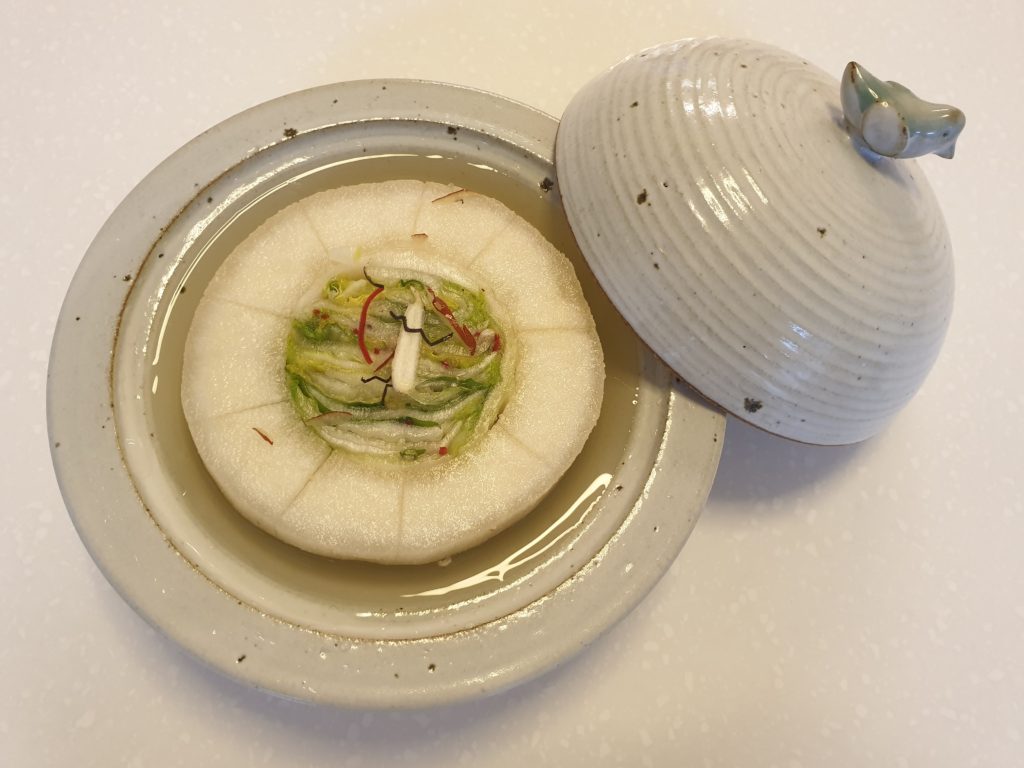
GN: What do you think about Gwangju kimchi compared to other regions’ kimchi?
Kim: I think that it is salty, spicy, and the salted seafood taste is strong.
GN: How do you promote kimchi to foreigners?
Kim: Korean kimchi is a fermented food, which differs from ordinary foods. Thanks to lactic acid and bacterial fermentation, kimchi is a healthy food that can be easily digested and helps absorb protein, calcium, and nutrients that are easily lost in various vegetables such as cabbage and radish.
In addition to the nutrients from the main ingredients used in kimchi, ingredients such as red pepper powder, garlic, ginger, and others are effective for things like fighting cancer, immunity enhancement, digestion, relieving stress, skin protection, and diet. Capsaicin, especially that contained in red pepper powder, helps with weight loss by burning body fat by increasing metabolism.
GN: Do you have any special message for people who want to try eating kimchi for the first time?
Kim: When you try kimchi for the first time, you may sense a strong smell from the spices or the salted seafood, especially if you live in the Jeolla provinces.
There are about 300 different kinds of Korean kimchi referenced in literature. Do not judge kimchi by trying just one kind since there are varieties of kimchi that have been enjoyed by people from various ranks in society from kings to farmers.
There is dongchimi (동치미), which has a cool broth with a simple taste. There is also nabak kimchi, (나박 김치, watery kimchi made of sliced radishes), and also the not-so-spicy jang kimchi (장 김치) made with broth flavored by fermented soy sauce. Another option is baek kimchi (백 김치), the white cabbage kimchi which is not spicy. One more type is bo kimchi (보김치), which is slightly spicy and uses more seafood mixed with nuts.
Try different kinds of kimchi and enjoy what you like. If you cannot find a kimchi that suits your taste, let us know. There are many kimchi masters present in Gwangju who can make all kinds of kimchi. You too will be satisfied!
Interview translated by Park Min-young
Photographs courtesy of Kim Kyeong-mi
The Author
Karina Prananto is from Indonesia and has been living in Gwangju since 2006. That was also the first year for her to attend the Kimchi Festival, where she tried making kimchi for the first time. She likes fresh kimchi and kimchi fried rice.




